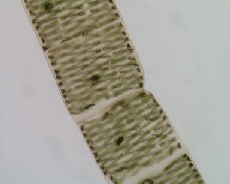Environmental Biotechnology
Environmental biotechnology - the control and improvement of the quality of our living environment by biotechnological activities.
Microbial Ecology
Microbial communities - play an important role in soil, waste and water management.
Microbial ecology - the study of the interrelationships between microorganisms and their living (biotic) and non-living (abiotic) environments.
Bacteria

E.coli (1000x)
Bacteria are the most abundant group of organisms present in the soil.
They are the primary degraders of natural organic compounds found in soil.
According to oxygen requirement, bacteria are classified into 3 groups:
1. Obligate aerobes - bacteria which can only grow in the presence of oxygen.
2. Facultative aerobes - bacteria which can grow both in the presence or absence of oxygen.
3. Obligate anaerobes - bacteria which can only grow in the absence of oxygen.
Staphylococcus (1000x)
Fungi
Fungi are eukaryotes that lack chlorophyll. They use organic materials for both energy and carbon sources.
Most fungi are terrestrial, living in soil or on dead plants. Some of the better-known fungi include mold, yeast, and mushroom.
Most fungi have considerable potential in the treatment of hazardous organic compounds.
Mold (400x)
Algae
The majority of algae are aquatic. Examples are seaweeds and kelps.
Carbon dioxide serves as the major carbon source for algal growth. Energy is derived from the absorption of light by photosynthetic pigments with oxygen being produced as a by-product.
Algae may be used in biological waste water treatment to absorb the excess nutrient.
Spiroyra (400x)
Copyright(c)2002 HKIEd. All Rights Reserved.
請採用 Internet Explorer 4.0 或 Netscape Navigator 4.0 或以上瀏覽器,並以800x600解析度瀏覽。



